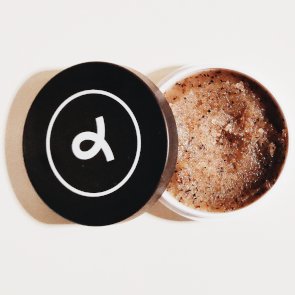How to Exfoliate Sensitive Skin
 Exfoliation is the removal of dead skin cells from the outer layers of the skin. It is something you should do at least once a week to keep your skin healthy, but people with sensitive skin usually find it tricky because their options are very limited. However, there are ways to exfoliate sensitive skin safely.
Exfoliation is the removal of dead skin cells from the outer layers of the skin. It is something you should do at least once a week to keep your skin healthy, but people with sensitive skin usually find it tricky because their options are very limited. However, there are ways to exfoliate sensitive skin safely.Try a Peel-Off Mask
Peel-off masks are formulated with polyvinyl alcohol or other ingredients that thicken once applied to the skin. When you carefully peel the mask off your face, it takes all your loose dead skin cells with it, leaving your skin clean and smooth. This is the gentlest way to mechanically exfoliate your skin; it is much safer than scrubs, sponges, brushes, etc.
Check this out: 6 Beauty Benefits of Peel-Off Face Masks
Try Chemical Exfoliation
A lot of people associate exfoliation with scrubbing one’s face with an abrasive, which can be really traumatic for sensitive skin. However, there are other ways to rid your skin of dead cells. Chemical exfoliants loosen the glue-like substance that makes dead cells stick to your skin. They aren’t perfect since some chemicals can irritate sensitive skin, but there are safe options. Look for mild chemical peels with lactic acid or fruit enzymes.
Check this out: The Pros and Cons of the Jessner Peel
Take It Slow
If you’ve never used chemical peels before, you should take it slow. Start with the mildest products with a low concentration of acids or enzymes to see how your skin reacts to them. And never forget to test a new product, be it a chemical peel or a face wash, on your wrist before applying it to your face (we’re sure most people with sensitive skin already know it, but it never hurts to remind).
Check this out: 5 Ingredients to Avoid in Your Face Wash
Add Fresh Fruits or Yogurt to Your Skincare Routine
DIY beauty treatments aren’t for everyone, and people with sensitive skin tend to avoid them. However, you might want to make an exception for fresh fruits that contain natural acids and enzymes (for example, strawberry and papaya) and are great for gentle chemical exfoliation. Organic yogurt is great too, since it contains exfoliating lactic acid. To keep your skin safe, always mix fruits with a base like carrier oils and rinse them off after 10 minutes max.
Check this out: 5 Homemade Face Masks with Fresh Fruit
Remember That Post-Exfoliation Routine Matters
After exfoliation, you should moisturize, soothe and protect your skin. Try aloe vera gel or butter: it helps replenish moisture and has a calming effect on the skin. If you’re going out, don’t forget to apply a broad-spectrum sunscreen with SPF 30 or higher because skin post-exfoliation is especially vulnerable to UV damage.
Check this out: 6 Beauty Benefits of Aloe Butter (and How to Make It Yourself)
Breadcrumbs
Filters
- Face
Tags
Related Articles
- 5 Non-Comedogenic Oils for Skin Care, 4 Benefits and Uses of Tea Tree Oil for Your Skin, How to Make Your Skin Look Glowing After a Night Out, 8 Amazing Benefits of Aloe Vera Gel for Your Skin and Hair